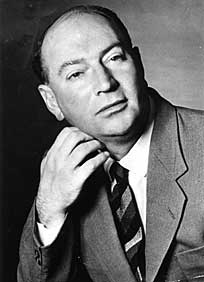 |
Quick Facts Ronald Hugh Morrieson Born: Hawera, N.Z. 29th January 1922 |
|
Born in 1922, novelist and short story writer Ronald Hugh Morrieson spent his whole life, including his writing years, in Hawera where he died in 1972. Morrieson lived in his mother’s home, taking rare breaks to Auckland for a few days in his 20s, New Plymouth in later years, and to a writer’s conference in Palmerston North towards the end of his life. In order to write in the evenings, from the age of 37 he worked as a private music teacher; prior to that he worked in the Hawera area as a casual dance-band player. In 1963 his first novel, The Scarecrow, was published in Sydney by Angus & Robertson. Set in a small town much like Hawera, the tragicomedy of a serial killer was well received by reviewers, who saw it as a Gothic melodrama with a strong pop-culture component. In 1964 his second book, Came a Hot Friday, was less well received. Again set in a small Taranaki town, this was a tragicomic moral tale about gambling. The poor reviews, combined with his alcoholism and the death of his mother in 1968, meant his final decade as an unhappy one. One of the reasons for the poor reviews was the violence and sexuality in his writing, which the conservative critics of the time struggled with. For them, Morrieson did not live up to the high cultural models that dominated literature at that time. As one critic said, Came a Hot Friday was ”certainly not the New Zealand that I know”. Morrieson is widely believed to have worried that he could end up ‘another of those poor buggers who gets discovered when they’re dead’ and how right he was. From 1965 onward none of Morrieson’s work was published until after his death in 1972. Two of Morrieson’s short stories were published in 1974 by Landfall. In March of that year they published ‘Cross my heart and cut my throat’, the comic story of a male guitar teacher’s attraction to a young female pupil. The second, The Chimney, is a far more serious tale concerning morality and sexual desire in an adolescent boy. Published in December of the same year, this work was considered a fine example of writing as art. Both pieces allude to an overly intimate relationship with the author’s mother. Much harder to get published was Predicament, which was turned down by previous publisher Angus & Robertson. This, his third novel, was a powerful and disturbing tale of the psychological fantasy world of adolescence, again in a familiar small-town. After many drafts, some of which were simply discarded, the novel was finally published by Dunmore Press in Palmerston North in 1975. Short and bleakly dark, Pallet on the Floor (1976), looks at rape, murder and suicide, this time set against a freezing works backdrop. Dunmore again picked up the work, but it has a somewhat unfinished feel, as though really only in draft form. In 1976 Heinemann published a New Zealand edition of The Scarecrow and in 1981 Came a Hot Friday was put out by Penguin. Both novels have also been made into feature films. Writing about a writer: excerpts from articles about Ronald Hugh Morrieson and his works. “I recommended The Scarecrow to a friend who afterwards commented that he found so much life in the novel it had clearly required no author, having in some miraculous way written itself. I daresay there is a naivety somewhere concealed in this statement; but I have no complaints if it can be taken to mean that ‘life’ is so very much there in the novel, only because Mr Morrieson’s powerfully inventive imagination has worked along hand in glove with his superb gift for story-telling” This is the opening paragraph of Frank Sargeson’s Two novels by Ronald Hugh Morrieson: An appreciation which was published in the June 1971 issue of Landfill magazine. This article is available for reading at Hawera LibraryPlus. “The novels of Ronald Hugh Morrieson do, in their way, articulate a vision of reality, and therefore deserve whatever we can give them in the way of public notice. I wasn’t at once drawn to either. I was slowly gathered in. I was conscious of lapses. The writing sagged in places. There was plenty of what I suppose might be called ‘bad taste’. But CK Stead then goes on to say “I could only say that those cool sentences, and in the ones that follow them, is such an instinct for combining the bizarre and the beautiful that I am completely disarmed”. From Ronald Hugh Morrieson and the art of fiction by C.K. Stead in the June 1971 issue of Landfill magazine. This article is available for reading at Hawera LibraryPlus. “I first read Ronald Hugh Morrieson’s The Scarecrow in 1965, on the passionate suggestion of a friend, and was quite dazzled by its ribald verve. Here, it seemed, was a unique literary talent, a genuine primitive, perhaps our first real folk-writer since Frank Anthony – and out of the same territory as those Me and Gus tales. I then discovered Morrieson’s second book, Came a Hot Friday, which confirmed that the first was no accident. It still seems by far the funniest book ever written in New Zealand, wild and bawdy, rich with incident. It should by rights have been this country’s best-ever seller”. From Hermit of Hawera by Maurice Shadbolt, published in the February 12, 1973 issue of NZ Listener magazine. This article is available for reading at Hawera LibraryPlus. |
||